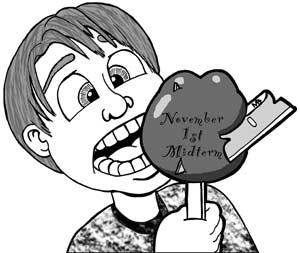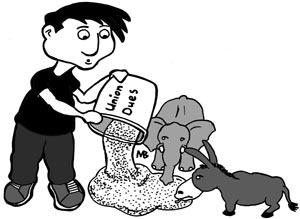Decompression Session
Sunday, November 20, 2005








 Here are about a month's worth of pics. I like how the time it takes me to conceptualize and draw a picture has significantly lowered during this period. I find it weird considering the amount of stress and multitasking I've had to do at the time. Either it's the stress that causes me to draw faster or it's the fact that drawing calms me. The former wouldn't surprise me but I hope it's the latter since it's healthier.
Here are about a month's worth of pics. I like how the time it takes me to conceptualize and draw a picture has significantly lowered during this period. I find it weird considering the amount of stress and multitasking I've had to do at the time. Either it's the stress that causes me to draw faster or it's the fact that drawing calms me. The former wouldn't surprise me but I hope it's the latter since it's healthier.
Labels: april o'neil, art, bill fillmaff, daily nexus, shredder, teenage mutant ninja turtles, torrin brooks
Laugh, and the World Laughs with You...
Saturday, November 05, 2005
Here's a review I wrote on Marjane Satrapi's lecture at my university:
I love comic books. I love them so much that I end up in arguments trying to explain their artistic and cultural merit to the uninitiated. The people who look down on comics do so with sweeping statements. Yes, there is an over-saturation in the superhero genre. Yes, the comic industry can be a tad misogynistic. However, these generalizations overlook landmark works such as Art Spiegelman’s Maus, Neil Gaiman’s Sandman and, more recently, Marjane Satrapi’s Persepolis. Satrapi came to Campbell Hall not just to lecture about her graphic novels, but also to discuss her particular perspective of Iranian culture, by which her comics are influenced.
Satrapi describes her experience growing up in France to be one of alienation. During her teenage years, being Iranian meant once came from an “evil” nation. The misconceptions people had of Satrapi and her native country caused them to treat her differently. This ignorance helped influence Satrapi to write her award-winning graphic novels.
Some creators tend to emphasize the term “graphic novel,” but “comic” may better represent Satrapi’s work. Taking place during Iran’s Islamic Revolution and war with Iraq, Persepolis is written through the lighthearted autobiographical perspective of Satrapi as a young girl. Satrapi uses humor to break across barriers and connect with an international language. The goal of her work is to get her audience to smile at the same things she finds funny. If people can laugh together, then they can understand together. Satrapi stresses that the simple art style and distancing from overt ethnic elements allows people to more easily relate to the story.
The self-deprecating humor found in Persepolis also appears during the lecture. Satrapi describes her artistic style as the epitome of her inadequacy at drawing. While many children gave up drawing upon realizing that they lacked the skill, she chose to “suffer” through life by refusing to give up making comics. What she can’t draw, she writes, and what she can’t write, she draws.
During the Q&A session, Satrapi recollects an offer made to her by a Hollywood producer to make a live action version of Persepolis. The concept would have combined her memoirs with a “Beverly Hills, 90210” twist. She turned the producer down after pondering the possibility of a trendy teenage show emerging from the backdrop of the Iran/Iraq war.
Despite all her accomplishments, Satrapi remains humble and realistic. She declines any comparison to Art Spiegelman, even if it is intended as a compliment. Satrapi’s work may have successful worldwide reception, but she does not believe it will instigate any radical change. Instead, she continues to take pride in making other people smile. Perhaps through that, Satrapi hopes for a better understanding and exchange of cultures.
Labels: artsweek, book review, daily nexus, marjane satrapi, persepolis
